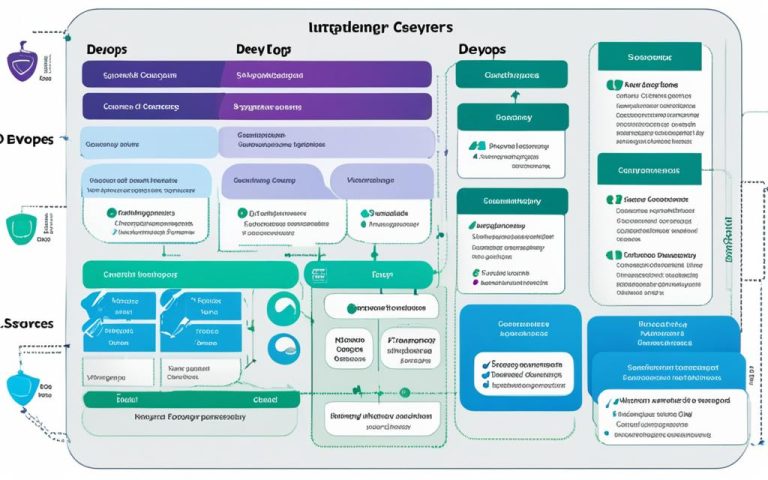Cloud collaboration tools have revolutionized the way teams collaborate, providing a seamless and efficient solution for remote and hybrid teams. Whether you are working on a small project or managing a large-scale operation, these tools offer a range of features to enhance team collaboration and boost productivity.
Cloud collaboration tools are online platforms that allow team members to collaborate on tasks, share files, and communicate in one centralized location, regardless of their device or physical location. With real-time collaboration features, team members can work together on documents, track progress, and streamline communication, leading to more efficient workflows and better outcomes.
These cloud-based tools are especially valuable for remote and hybrid teams. They enable teams to work together seamlessly, regardless of geographical barriers, time zones, or differences in work schedules. Team collaboration no longer relies on physical proximity or synchronous meetings, making it easier to connect and collaborate, increasing flexibility and efficiency.
In this article, we will explore the benefits of cloud collaboration tools and provide a list of the top tools available in the market. We will also discuss key factors to consider when choosing a cloud collaboration tool to help you make the right decision for your team’s needs.
Benefits of Cloud Collaboration Tools
Cloud collaboration tools offer several key benefits for teams. These tools provide a secure and efficient way to share files, eliminating the need for large file attachments in emails. With cloud storage, team members can easily access and collaborate on documents and files in real-time.
One of the major advantages of cloud collaboration tools is their support for remote collaboration. They come equipped with features such as instant messaging, screen sharing, and video conferencing, enabling teams to work together seamlessly regardless of their physical location.
“Cloud collaboration tools empower teams to collaborate effectively, no matter where they are based. The ability to share ideas, exchange feedback, and work on projects in real-time significantly enhances productivity and fosters a sense of unity within a team.”
In addition to facilitating remote collaboration, cloud collaboration tools often include analytics and project management dashboards. These features enable teams to monitor performance, track progress, and gain valuable insights into their workflows.
Cloud collaboration tools are designed to be compatible with various devices, including mobile. This device compatibility ensures that team members can access and contribute to projects from their preferred devices, enhancing flexibility and convenience.
Furthermore, cloud collaboration tools offer customizability to suit the unique needs of each business. Organizations can tailor the tools to their specific workflows, enabling them to optimize team collaboration and achieve greater efficiency.
By leveraging cloud collaboration tools, teams can enjoy streamlined file sharing, seamless remote collaboration, enhanced analytics, device compatibility, and customizability—all contributing to improved productivity and collaboration within the organization.
| Benefits of Cloud Collaboration Tools |
|---|
| Secure and efficient file sharing |
| Support for remote collaboration |
| Real-time communication through instant messaging, screen sharing, and video conferencing |
| Analytics and project management dashboards |
| Device compatibility |
| Customizability to suit business needs |
Top Cloud Collaboration Tools
When it comes to cloud collaboration tools, there are several options available in the market. These tools are designed to enhance team collaboration and streamline project workflows. Let’s explore some of the top cloud collaboration tools:
1. ClickUp
ClickUp is an all-in-one project management and collaboration tool that offers a wide range of features. With real-time collaboration, task management, and integrations with other tools, ClickUp provides a seamless collaboration experience.
2. Microsoft 365
Microsoft 365 is a popular choice for businesses, providing a complete suite of productivity applications such as Word, Excel, and Outlook. Along with these applications, Microsoft 365 also offers cloud storage and communication tools like Microsoft Teams for effective collaboration.
3. Sync
Sync is a relatively new cloud collaboration software that focuses on secure file storage and collaboration features. With a strong emphasis on permissions and external partner access, Sync ensures data security while facilitating seamless collaboration.
4. Notion
Originally a note-taking app, Notion has evolved into a powerful platform for project development, documentation, and collaboration. Its versatile features make it an excellent choice for teams looking for an all-in-one collaboration solution.
5. Wrike
Wrike is a versatile tool known for its approval features and visual project management capabilities. With Wrike, teams can efficiently manage projects, collaborate seamlessly, and streamline workflows for enhanced productivity.
No matter which cloud collaboration tool you choose, each of these options offers unique features and benefits to enhance team collaboration and productivity. Consider your team’s specific requirements and select a tool that aligns with your business goals.
Key Factors to Consider when Choosing a Cloud Collaboration Tool
When selecting a cloud collaboration tool, several key factors should be taken into consideration to ensure optimal performance and seamless teamwork. These factors include data security, scalability, ease of use, and transparency.
Data security is of utmost importance to protect sensitive information and maintain the integrity of your projects. It is crucial to choose a tool that offers robust encryption, multi-factor authentication, and compliance with industry standards to safeguard your data from unauthorized access and cyber threats.
Scalability plays a vital role in accommodating future growth and meeting evolving project needs. A scalable cloud collaboration tool allows your team to easily scale up or down as your business expands or project requirements change. This flexibility ensures that your collaboration tool can adapt to your organization’s increasing demands without any limitations.
Ease of use is another crucial consideration when selecting a cloud collaboration tool. An intuitive and user-friendly interface with a short learning curve enables quick adoption by your team members, minimizing training time and maximizing productivity. Look for tools that offer a seamless user experience and provide comprehensive support to help your team get up to speed efficiently.
Transparency is essential for efficient collaboration within your team. Transparency allows team members to have visibility into the progress of projects, tasks, and discussions. Real-time communication and feedback foster a collaborative environment and enable swift decision-making. Choose tools that provide robust communication channels, project tracking capabilities, and centralized documentation to ensure transparency and streamline collaboration.
By considering these key factors – data security, scalability, ease of use, and transparency – you can select a cloud collaboration tool that aligns with your organization’s needs and empowers your team to collaborate effectively.
Comparison Table: Key Factors of Cloud Collaboration Tools
| Factors | ClickUp | Microsoft 365 | Sync | Notion | Wrike |
|---|---|---|---|---|---|
| Data Security | ✅ | ✅ | ✅ | ✅ | ✅ |
| Scalability | ✅ | ✅ | ✅ | ✅ | ✅ |
| Ease of Use | ✅ | ✅ | ✅ | ✅ | ✅ |
| Transparency | ✅ | ✅ | ✅ | ✅ | ✅ |
Note: This table compares the key factors of popular cloud collaboration tools, including ClickUp, Microsoft 365, Sync, Notion, and Wrike. All of these tools prioritize data security, scalability, ease of use, and transparency to provide a comprehensive collaboration experience.
Conclusion
Cloud collaboration tools have revolutionized team collaboration and productivity, providing a secure and accessible platform for remote and hybrid teams. With features like seamless communication, file sharing, and task management, these cloud-based software solutions enhance teamwork and streamline project workflows.
By choosing the right cloud collaboration tool, businesses can unlock the full potential of their teams. Whether it’s ClickUp, Microsoft 365, Sync, Notion, or Wrike, investing in a cloud collaboration tool is a valuable decision for optimizing team collaboration and achieving greater productivity.
Embrace the power of cloud collaboration and take your team’s productivity to new heights. With online collaboration, businesses can foster seamless communication, streamline workflows, and ensure that teams can work together efficiently, regardless of their physical location. By leveraging the benefits of cloud-based software, organizations can gain a competitive edge in today’s fast-paced and ever-evolving business landscape.
FAQ
What are cloud collaboration tools?
Cloud collaboration tools are software that allows team members to collaborate online, regardless of their device or location. These tools offer real-time collaboration features, enabling tasks management, file sharing, and communication in one place.
What benefits do cloud collaboration tools offer?
Cloud collaboration tools provide a secure and efficient way to share files, support remote collaboration through features like instant messaging and video conferencing, and offer analytics and project management dashboards. They are compatible with various devices and customizable to suit the unique needs of each business.
What are some top cloud collaboration tools in the market?
Some highly recommended cloud collaboration tools include ClickUp, Microsoft 365, Sync, Notion, and Wrike. These tools offer a range of features such as real-time collaboration, task management, and integrations with other tools.
What factors should be considered when choosing a cloud collaboration tool?
Factors to consider include data security, scalability, ease of use, and transparency. Look for tools that offer encryption, multi-factor authentication, compliance with industry standards, and the ability to accommodate future growth. Choose a tool with a short learning curve for smooth adoption, and that provides visibility into project progress and real-time communication.
How do cloud collaboration tools enhance team collaboration and productivity?
Cloud collaboration tools revolutionize team collaboration by providing seamless communication, file sharing, and task management. They offer a secure and accessible platform for remote and hybrid teams, enhancing teamwork and optimizing project workflows.



















